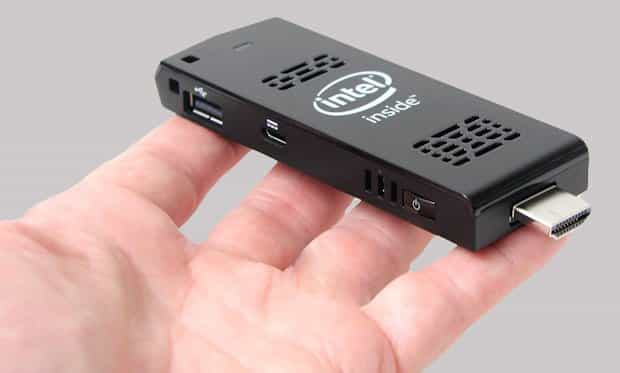
Digital Signage Player
Digital Signage Player In today's fast-paced digital era, businesses, and organizations are constantly seeking innovative ways to capture attention, engage customers, and communicate effectively. One such technology that has gained significant popularity is the digital signage player. This powerful tool enables organizations to display dynamic content, advertisements, and information on digital screens, creating captivating visual experiences. In this article, we will explore the capabilities of digital signage players and their impact on communication and engagement across various industries.
What is a Digital Signage Player?
A Digital Signage Player is a device or software application that drives the content displayed on digital screens or electronic billboards. It acts as the central hub that receives, processes, and plays back multimedia content such as images, videos, and interactive applications. Digital signage players come in various forms, including hardware media players and software solutions that can be installed on existing devices like smart TVs, tablets, or dedicated media players.
Captivating Visual Experiences:
Digital signage players provide organizations with the ability to create captivating visual experiences that capture attention and engage audiences. By leveraging high-resolution displays, motion graphics, and dynamic content, businesses can deliver impactful messages that stand out in crowded environments. Whether it's a vibrant video advertisement, an interactive menu at a restaurant, or real-time information in airports, digital signage players empower organizations to communicate their message effectively.
Flexible Content Management:
One of the key advantages of digital signage players is their flexibility in content management. Using intuitive software interfaces, businesses can easily schedule and update content remotely, ensuring that the right message is displayed at the right time. Whether it's updating menus, showcasing promotions, or displaying event schedules, digital signage players offer real-time control over content distribution. This flexibility allows organizations to adapt their messaging based on changing circumstances, target specific audiences, and run targeted campaigns.
Increased Engagement and Interactivity:
Digital signage players enable interactivity, transforming passive viewers into engaged participants. Touchscreen displays integrated with digital signage players enable users to interact with the content, providing an immersive and personalized experience. For instance, customers can browse through product catalogs, place orders, or request additional information directly from the signage. This level of engagement enhances customer satisfaction, increases brand loyalty, and boosts sales.
Analytics and Data-driven Insights:
Digital signage players also offer analytics and data-driven insights, enabling organizations to measure the effectiveness of their campaigns. By tracking metrics such as dwell time, viewer demographics, and engagement rates, businesses can gain valuable insights into customer behavior, preferences, and content performance. This data-driven approach allows organizations to refine their strategies, optimize content delivery, and make informed decisions to maximize their return on investment.
Conclusion:
The rise of digital signage players has revolutionized communication and engagement in various industries. From retail stores and restaurants to corporate offices and transportation hubs, these powerful devices have transformed the way organizations communicate with their audiences. By delivering captivating visual experiences, enabling interactivity, and providing flexible content management, digital signage players have become indispensable tools for modern businesses. As technology continues to advance, we can expect even more innovative features and capabilities from digital signage players, further enhancing their role in shaping the future of communication and customer engagement.

Digital Signage Player How Its Work?
Digital signage players work by receiving, processing, and displaying multimedia content on digital screens or electronic billboards. Here's an overview of how digital signage players function:
Content Creation and Management:
The process begins with content creation and management. Organizations create or source multimedia content such as images, videos, animations, or interactive applications. They can use specialized software to design and schedule content based on their communication goals. The content is typically stored and organized in a digital signage content management system.
Content Distribution:
Once the content is ready, it needs to be distributed to the digital signage players. This can be done in various ways, depending on the type of player being used. In hardware-based players, the content is typically stored on a local storage device, such as a USB drive or an internal memory card. The player connects to the content source and retrieves the media files.
In software-based players, the content is usually hosted on a remote server or cloud platform. The digital signage player software retrieves the content from the server via an internet connection. This approach allows for real-time updates and centralized management of multiple screens from a single interface.
Content Playback:
Once the content is received by the digital signage player, it processes the multimedia files and plays them back on the connected digital display or displays. The player ensures that the content is displayed in the appropriate format, resolution, and aspect ratio to suit the screen's specifications.
Digital signage players often support a range of media formats and codecs to accommodate diverse content types. They also provide options for customization, such as screen layouts, transitions, and scheduling parameters, allowing organizations to create visually appealing and dynamic presentations.
Monitoring and Control:
Digital signage players offer monitoring and control capabilities, allowing organizations to track and manage their digital signage networks. These features include remote monitoring of the player's status, network connectivity, and content playback. Additionally, organizations can remotely control the player, adjust settings, and push updates or new content to the devices.
Interactivity (optional):
Some digital signage players support interactivity through touchscreens or other input devices. These players enable users to interact with the displayed content, such as selecting options, navigating menus, or filling out forms. The player processes the user input and triggers the appropriate response or action, creating an engaging and interactive experience.
Final Words:
Overall, digital signage players serve as the backbone of a digital signage network, ensuring the smooth delivery and playback of multimedia content on digital screens. They provide organizations with the flexibility, control, and interactivity required to effectively communicate with their target audiences.


No comments yet